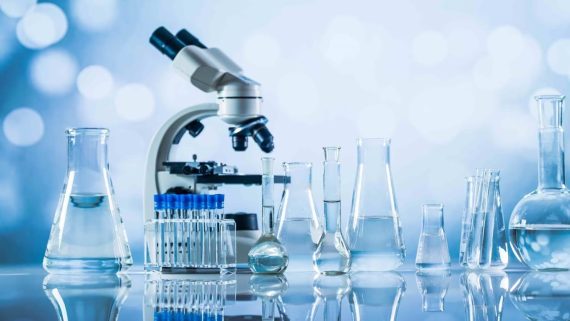There are following types of laboratory research

General clinical studies
This type of diagnostics examines the physicochemical properties and cellular composition of the biomaterial (blood, urine, feces, sputum, saliva, semen). Calculation of indicators is carried out both in manual and automatic mode.
General blood and urine tests are the most popular types of research. They help to detect the disease in a short time – the result will be ready on the same day.
The range of their application is very wide:
- diagnosis of diseases;
- examination before the operation;
- different medical examinations (for pregnant women, registration of medical certificates).
Biochemical analyzes
Biochemical studies evaluate the composition of human biological fluids.
These include:
- blood and its components – plasma and serum;
- urine;
- sweat;
- cerebrospinal fluid;
- digestive juices;
- exudative fluids (pleural, intra-articular, ascitic, etc.).
The most popular object of biochemical research is blood and its components.
Indicators of a biochemical blood test give a picture of the state of internal organs, allow to find out the body’s need for microelements, analyze tissue and cellular metabolism.
Hormonal panel
A study on hormones allows to evaluate the work of the endocrine glands.
The most common are:
- thyroid gland hormone test;
- pancreas hormone test;
- gonads hormone test.
Hormonal studies are also an integral part of pregnancy diagnostics.
Diagnosis of infections (PCR, ELISA, bacteriological studies)
PCR diagnostics (polymerase chain reaction) is the most effective way to detect the causative agent of the disease.
This method helps to detect DNA fragments of pathogenic microorganisms.
ELISA diagnostics (enzymatic immunoassay) – the value of this method lies in the possibility of assessing the duration of infection, although it is considered less accurate than PCR diagnostics.
Microbial culture for flora and sensitivity to antibiotics is the most important type of research, it allows to choose the most effective antibacterial treatment.
Histological studies
This type of diagnosis involves taking a tissue sample to study its cellular composition. The tissue is taken through a biopsy, a minimally invasive surgical procedure. In some cases, not a piece of tissue is examined, but a fragment of an organ or an entire organ. In this case, the material is taken during a full-fledged operation. Histological studies are indispensable in the diagnosis of malignant neoplasms; this analysis is the main one in making a diagnosis.
Cytological studies
This diagnosis is based on the study of the cellular composition of the biomaterial.
Main areas of application:
- oncology – for the diagnosis of benign and malignant tumors, for monitoring the progress of antitumor treatment.
- hematology – for the diagnosis of diseases of the hematopoietic system.
- gynecology – for the early detection of precancerous changes in the organs of the female genital area, to determine hormonal disorders.
- diseases of various organs and systems – to diagnose and evaluate the effectiveness of treatment.
Cytological research methods include Pap-test and various smears.
Immunological diagnostics
Immunological tests are used for obvious violations of immunity.
These include:
- severe infectious and inflammatory processes that are difficult to treat;
- the presence of a persistent course of fungal diseases;
- a number of dermatological diseases (severe course of molluscum contagiosum, herpes zoster, Kaposi’s sarcoma);
- condition after organ transplantation or chemotherapy.
In addition, the study of immunity is necessary:
- in case of HIV;
- at oncological diseases;
- during and after taking drugs that suppress the immune system (immunosuppressants).
Immunological tests include studies of:
- the number and functional abilities of leukocytes, the percentage of their types;
- total number of B-lymphocytes, T-lymphocytes and their population;
- level of immunoglobulins class A, G, E, M.
Allergy diagnostics
The main methods of laboratory research for allergies:
- determination of the amount of specific immunoglobulins E and G in the blood;
- skin allergological tests (application, scarification, prick test);
- Duncan’s cold test (diagnosis of allergy to cold).
You should know that in children and adults, the approach to diagnosing allergies can differ significantly, so you should not engage in self-diagnosis – the need for certain studies will be determined by an allergist.
Hematological research
List of basic blood tests:
- clinical blood test with counting of leukocyte formula, platelets, reticulocytes;
- coagulogram – assessment of blood coagulation;
- diagnosis of anemia – transferrin, ferritin, iron, folic acid, vitamin B12;
- determination of blood group and Rh factor;
- Coombs test (diagnosis of hemolytic anemia);
- blood tests for sugar (glucose).








